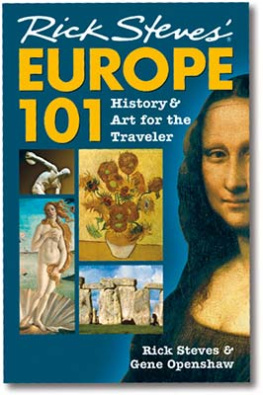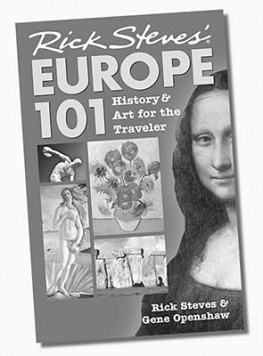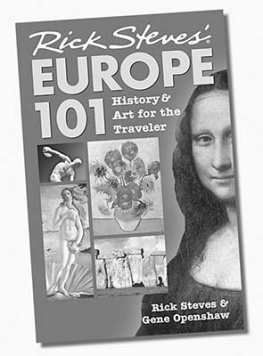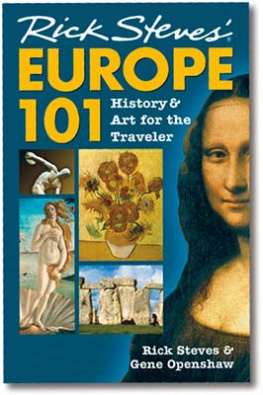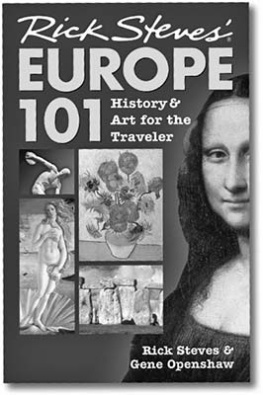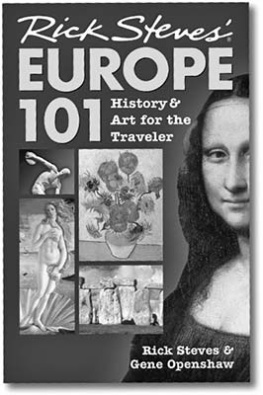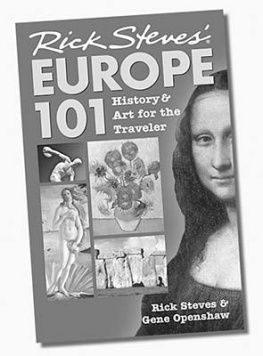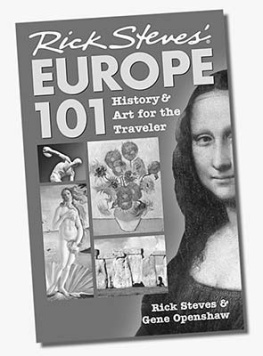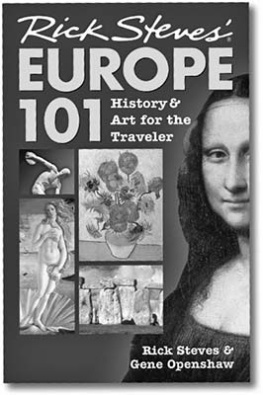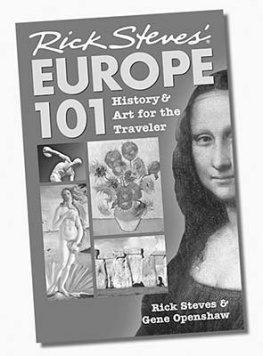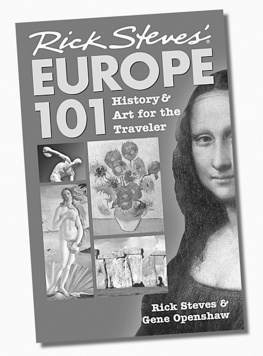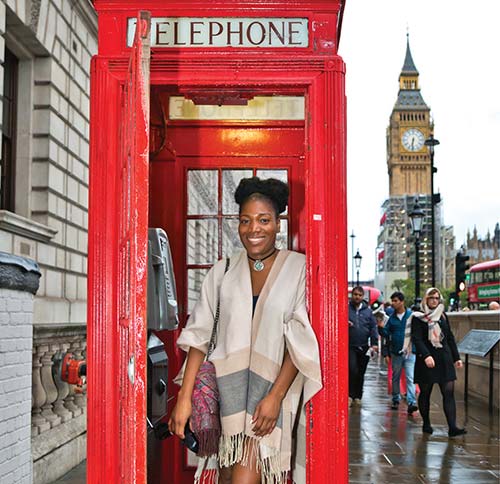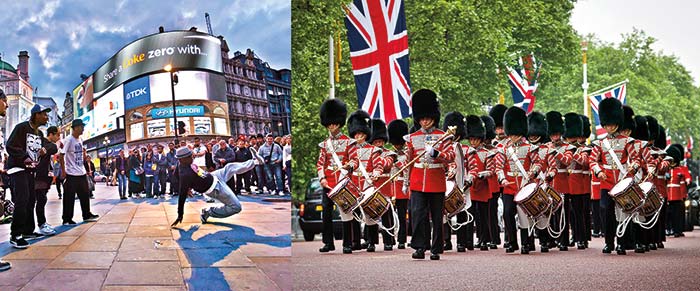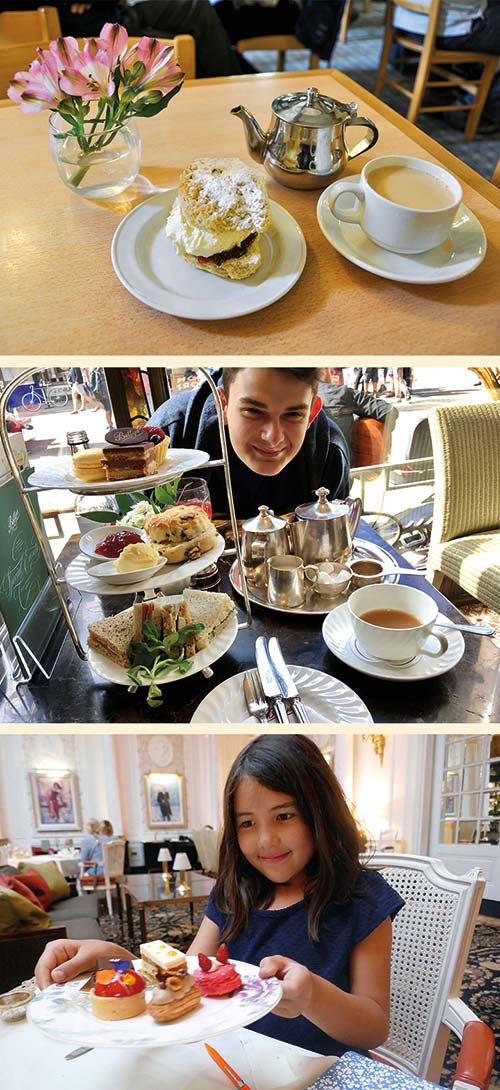Contents
Rick Steves
LONDON
Rick Steves & Gene Openshaw
Welcome to Rick Steves Europe
Travel is intensified livingmaximum thrills per minute and one of the last great sources of legal adventure. Travel is freedom. Its recess, and we need it.
I discovered a passion for European travel as a teen and have been sharing it ever sincethrough my bus tours, public television and radio shows, and travel guidebooks. Over the years, Ive taught millions of travelers how to best enjoy Europes blockbuster sightsand experience Back Door discoveries that most tourists miss.
Written with my talented co-author, Gene Openshaw, this book offers a balanced mix of Londons blockbuster sights and underrated gems. Its selective: Rather than listing a lorry load of museums and galleries, we recommend only the best ones. And its in-depth: Our self-guided museum tours and city walks provide insight into Londons vibrant history and todays living, breathing culture.
We advocate traveling simply and smartly. Take advantage of our money- and time-saving tips on sightseeing, transportation, and more. Try local, characteristic alternatives to expensive hotels and restaurants. In many ways, spending more money only builds a thicker wall between you and what you traveled so far to see.
We visit London to experience itto become temporary locals. Thoughtful travel engages us with the world, as we learn to appreciate other cultures and new ways to measure quality of life.
Judging by the positive feedback we receive from readers, this book will help you enjoy a fun, affordable, and rewarding vacationwhether its your first trip or your tenth.
Happy travels!
London is the LA, DC, and NYC of Britain, all rolled into one of the grandest cities on the planet. Its quintessentially English, yet worldly. Its old and traditional, yet wildly new and modernand with more world-class sights than anyone can see in a single visit.
Blow through the city on a double-decker bus, and take a pinch-me-Im-in-London walk through the West End. Ogle the crown jewels at the Tower of London, gaze up at Big Ben, and see the Houses of Parliament in action. Cruise the Thames River, beachcomb its banks, and take a spin on the London Eye. Hobnob with the tombstones in Westminster Abbey; visit Leonardo, Botticelli, and Rembrandt in the National Gallery; and explore Harry Potters magical realm at the film studio in Leavesden. Enjoy Shakespeare in a replica of the Globe Theatre and marvel at a glitzy, bombastic musical at a West End theater. Ascend the dome of St. Pauls Cathedral, then rummage through our civilizations attic at the British Museum.
London is more than its museums and landmarks. Its a living, breathing, thriving organism...a coral reef of humanity. You can enjoy some of Europes best people-watching at Covent Garden, Victoria Station, Piccadilly Circus, or any of the major stops on Londons subway system, known affectionately as the Tube. Snap to at Buckingham Palaces Changing of the Guard, mingle with well-heeled shoppers at a posh department store, or haggle for bargains at a street market.
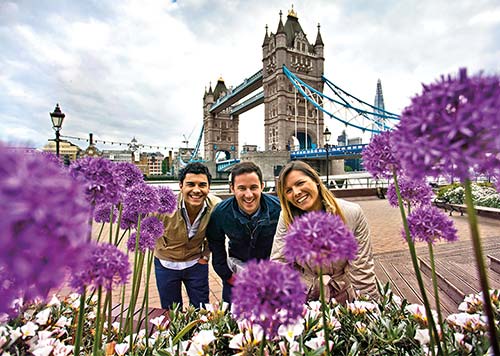
Modern and traditional: street performer near Piccadilly Circus; Changing of the Guard on The Mall
Wherever you go, enjoy the British accents and slang. Part of the fun of visiting this city is the illusion of hearing a foreign language and actually understanding it...most of the time.
Londons had a long evolution into the multicultural trade center it is today. In AD 43, the Romans founded Londinium as a port on the Thames. Over the centuries, the city became the capital of England and overcame devastating plagues and fires.
In the 1700s, Britain explored (and exploited) the globe, establishing trading companies, collecting colonies, and building its empire, with London as its powerhouse command center. In 1805, Britannia ruled the waves, after defeating the French and Spanish armadas at the Battle of Trafalgar. At its peak (after World War I), the British Empire ruled nearly a quarter of the worlds land and population. With colonies around the world, it was called the empire on which the sun never sets.
In World War II, the Britishinspired by Winston Churchills stirring oratory and leadershipbravely withstood the Nazis relentless attacks in the Battle of Britain and the London Blitz. But during the turmoil of the war and its aftermath, Britain lost many of its colonies.
Tea Time
A spot of afternoon tea feels just right in London. Many fancy department stores, restaurants, and hotels offer this genteel tradition in elegant, pinkie-waving surroundings.
The cheapest tea on the menu is generally a cream tea; the most expensive is the champagne tea. Cream tea is simply a pot of tea (loose, strained into your cup; the Brits always add milk), served with a homemade scone or two, jam, and thick, buttery clotted cream. For maximum elegant taste per calorie, I slice my scone thin like a miniature loaf of bread.
Afternoon teawhat many Americans would call high teais a pot of tea typically accompanied by a three-tiered tray of nibbles. The bottom tier holds dainty finger food (such as cucumber, egg and watercress, and smoked salmon crustless sandwiches cut into triangles); the middle tier holds scones; and the top tier has tiny cakes and pastries. Champagne tea includes all of the goodies, plus a glass of bubbly. High tea to the English generally means a more substantial late afternoon or early evening meal, often served with meat or eggs. Quantities can be enormous; most places allow you and a partner to share one cream tea and one afternoon tea.
Afternoon tea is universally leisurely, but the ambiance depends on the venue. Some of the fanciest have musical accompaniment, such as a piano or chamber orchestra, and require dressing up and reservations. Most tearooms welcome tourists in jeans and sneakers (and cost, on average, between 35 and 50). Some places serve tea all afternoon (12:00-18:30), some only from around 15:00 to 17:00.
Indulging in a leisurely tea is fun for young and old, whether a simple cream tea (top) or an afternoon tea with all the goodies.

